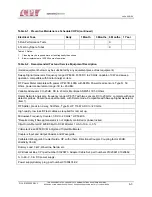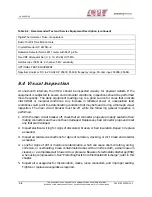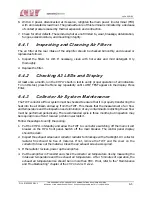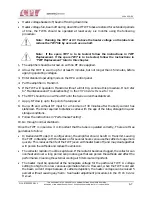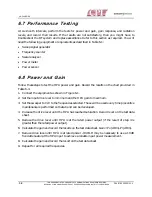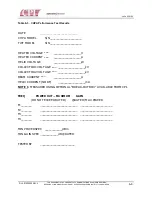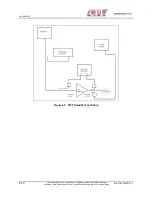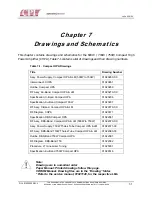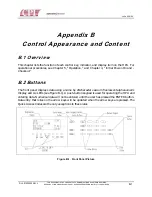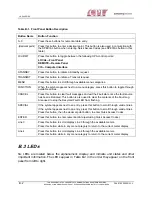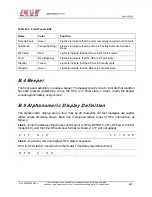
CHPA SERIES
6-4
THIS
DOCUMENT
IS
THE
PROPERTY
OF
COMMUNICATIONS
&
POWER
INDUSTRIES.
REPRODUCTION
OR
RELEASE
WITHOUT
EXPRESS
PERMISSION
IS
STRICTLY
PROHIBITED
D
OC
.01023245
R
EV
.L
Table 6-2. Recommended Test and Service Equipment Description (continued)
Digital Thermometer, Fluke or equivalent.
Basic Tool Kit Time Motion tools.
Crystal Detector HP 8470B—2.
Radiation Detector Narda 8611 meter with 8621 probe.
Fixed RF Attenuator Set (3, 6, 10, 20 dB) H11581A.
Oscilloscope 100 MHz, 2 channel, 5 MV sensitivity.
OPTIONAL TEST EQUIPMENT
Spectrum Analyzer, DC to 20 GHz HP 8561E, 8563E, frequency range, 50-ohm input. 8595E, 8566B.
6.4 Visual Inspection
At one-month intervals, the CHPA should be inspected visually for physical defects. If the
equipment is subjected to severe environmental conditions, inspections should be performed
more frequently. The daily equipment readings log is a good source for clues that indicate
intermittent or marginal conditions. Any increase in reflected power or unexplained fault
conditions could point to a deteriorating condition that may be found during a thorough visual
inspection. The main circuit breaker must be off while the following general inspection is
performed.
1.
With the main circuit breaker off, check that all connector plugs are properly seated in their
mating connectors and have not been damaged. Replace any bad connector plugs and reset
any that are dislodged.
2.
Inspect electrical wiring for signs of discolored, broken, or bad insulation. Repair or replace
as needed.
3.
Inspect all soldered connections for signs of corrosion, cracking, or dirt. Clean and resolder
as needed.
4.
Look for signs of dirt or moisture contamination, which can cause short-circuiting, arcing,
corrosion, or overheating. Clean contaminated areas with a lint-free cloth, a small vacuum
cleaner, or a compressed-air blower at low pressure. Beware of electrostatic discharge (ESD)
when using compressed air. See “Protecting Parts from Electrostatic Discharge”, later in this
chapter.
5.
Inspect all waveguides for discoloration, cracks, loose connectors, and improper sealing.
Tighten or replace waveguides as required.














